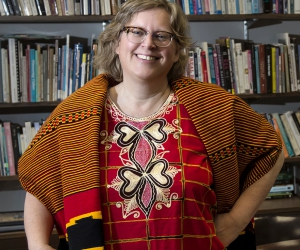
New Study Gives Guidance on STEAM Education Integration
As more K-12 schools upgrade their curriculums to incorporate the arts and humanities into STEM education, there are several practices they can utilize to improve student learning experiences, according to a new research paper.
Enhancements include fully integrating the arts/humanities into the revamped STEAM curriculum, providing greater levels of ongoing support for teachers, and building lessons around multi-disciplinary problems that are relevant and engaging to students.
“Some schools simply swap STEAM for STEM without much attention to the arts. Others do a full overhaul on their curriculum. One key is involving the arts and humanities teachers from the beginning. My experience is that things really change when they are involved from the outset,” said Cassie Quigley, an associate professor at the University of Pittsburgh School of Education and the lead author of the study.
The paper, “STEAM Designed and Enacted: Understanding the Process of Design and Implementation of STEAM Curriculum in an Elementary School,” was published this past May in the Journal of Science Education and Technology.
The paper’s authors were Quigley; Dani Herro, associate professor of digital media and learning at the Clemson University School of Education; Elizabeth King, associate professor and chair of the educational foundations department at University of Wisconsin-Whitewater; and Holly Plank, a graduate student researcher at the Pitt School of Education.
The paper is one of the first to study STEAM education teaching practices. The researchers observed a K-5 elementary school in southeastern Wisconsin over the course of an academic year. Data was collected through qualitative interviews with teachers and field notes from classroom observations by the researchers.
The STEAM education units in the school covered a wide range of topics. First-grade students studied the disappearance of bees, third-grade students explored park development in the local area, fourth-grade students examined a problem of hearing loss in teenagers, and fifth-grade students were challenged to redesign the school cafeteria.
The researchers evaluated STEAM education units on the following metrics: the extent to which it was problem-based, inquiry-driven, and utilized discipline integration, authentic tasks, teacher facilitation, technology integration, and student choice.
Key Findings:
- Schools should avoid treating the arts and humanities integration—known as STEAM education— as merely an “add on” in the design and planning stage. Instead, arts and humanities should be embraced as essential for innovation in real-world applications.
- STEAM education units should be designed around authentic, real-world problems. This approach makes the content more relevant to students’ lives and requires transdisciplinary solutions.
- Student choice should be prioritized in STEAM education. It should be recognized that there are multiple methods available to solve problems.
- Schools should provide teachers with ongoing curricular support for STEAM education. Resources include planning time, lesson ideas, templates, and existing lesson plans.
STEAM Education Conceptual Model
As part of the paper, the research team also developed their own STEAM education conceptual model to provide guidance to educators. The model has an overall ecosystem called the “learning context” and three interlocking dimensions: problem-solving skills, discipline integration, and classroom environment.
Quigley, who formerly taught physics and biology in high school and science in middle school, says STEAM education is transforming teaching and learning in schools. Classroom instruction is shifting from “what content do students need to know” toward “how can we support learners in the inquiry process.”
“The main takeaway from this research study is that there is a need for ongoing support for teachers if the schools want to fully enact curricular changes,” said Quigley.
Learn More
The Pitt School of Education is accepting applications for STEM and STEAM Education programs in the following areas:
- EdD in STEM Education
- STEAM Education Online Certificate
- STEAM Education Online Continuing Education course




